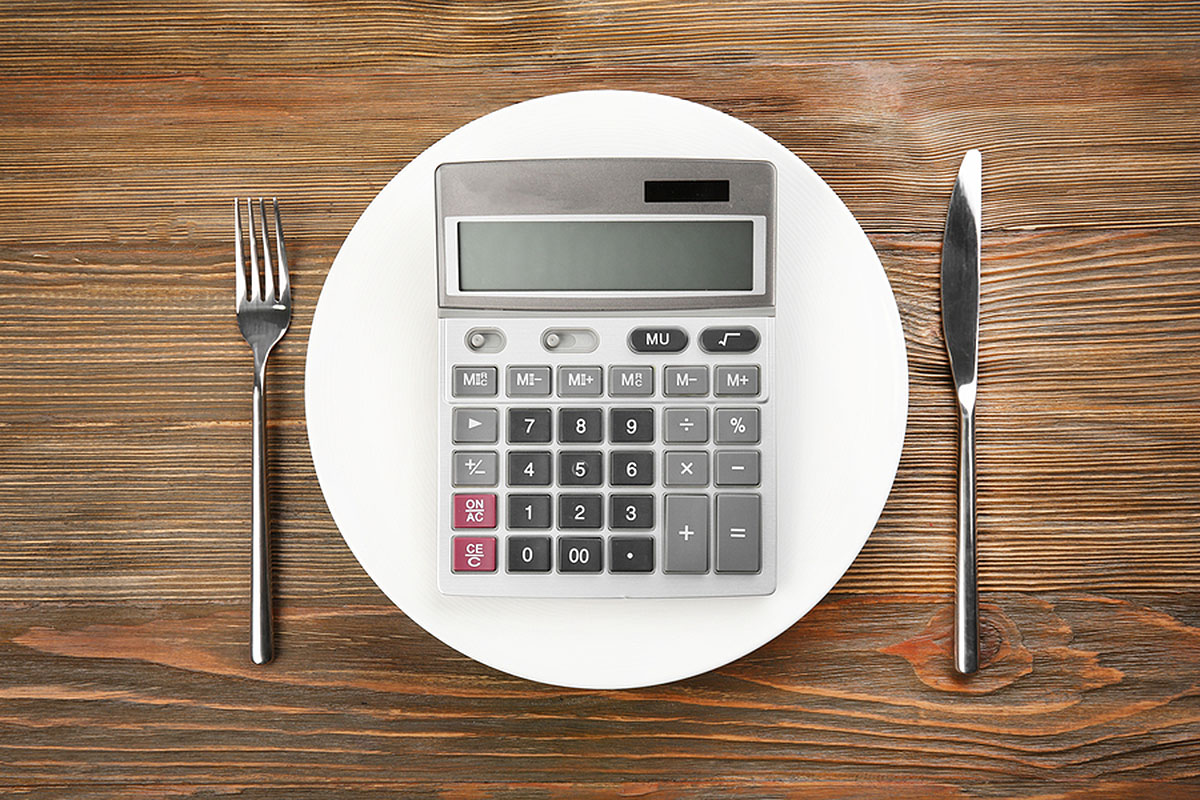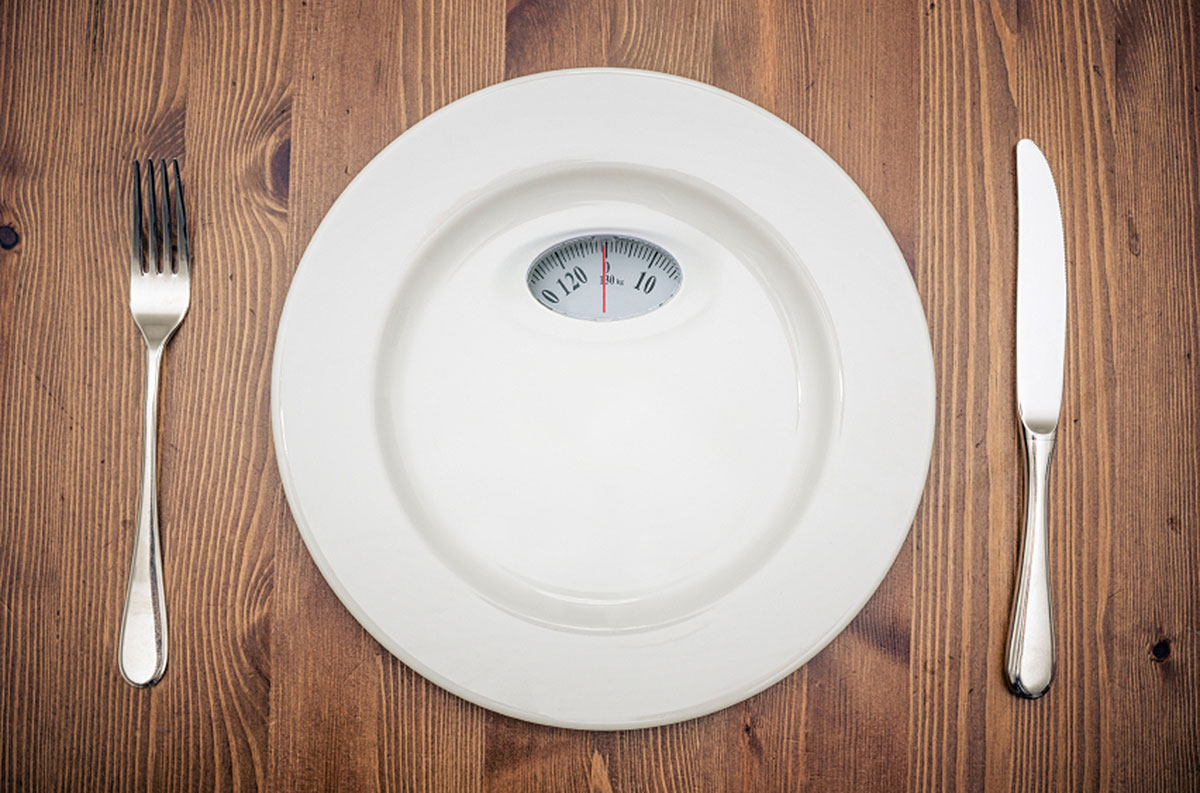The daily calorie intake is the amount of energy the body needs to function and maintain metabolism. A decrease in calorie intake by 15-20% per day leads to weight loss, while athletes must increase the calorie content of their daily diet to gain muscle mass.
You can either calculate the calorie intake using the Harris Benedict formula, or use the tables to determine the average. However, in the end, the calculation according to the formula does not take into account the fact that human needs for calories always vary from day to day.
// Calories per day
The daily calorie intake always depends on gender, weight and on the level of physical activity performed by a person on a particular day. In addition, the final goal - weight loss, maintaining existing weight or gaining muscle mass - affects the calculation of calorie intake.
The average calorie intake per day (for people aged 17-60 years, with a standard body complex and with an average level of physical activity) is 2400-2800 kilocalories for men and 1800-2200 kilocalories for women. The daily requirements of children and adolescents are usually lower.
For a more accurate calculation of calorie intake, you can use the formulas presented in the material (first of all, the Harris Benedict formula), tables or an online calculator. However, we note that the figure can only be calculated with an error of 200-300 kcal per day.
// Daily calorie intake:
- 2400-2800 kcal for men
- 1800-2200 kcal for women
// Read more:
- How to learn to count calories?
- rate of steps per day - taking into account age
- banana - benefits and calories
Calorie calculation - the basis of a diet?
It is important to understand that the calorie rate is only a conditional figure. Both the calculation method itself and the numbers indicated in the calorie tables can vary. The role is also played by the fact that the absorption of nutrients from food is rarely 100%, and the energy requirements on a particular day can be higher or lower.
The daily calorie intake is only a general guideline for dieting, while in practice it is more convenient to calculate the consumption rate of BJU (proteins, fats and carbohydrates). It’s also important to consider the glycemic index of carbohydrates — how quickly they increase blood sugar.
// Read more:
- daily intake of proteins, fats and carbohydrates
- glycemic index - tables
- nutrients - what is it?
Calorie Calculation Formula
Calculation of the daily calorie intake begins with determining the needs of the basic metabolism (BMR) - the energy needed by the body to support life. These include calorie requirements for brain function, maintaining body temperature, digesting food, and metabolism.
At the same time, BMR does not take into account physical activity - and from 20 to 90% of daily calories is spent by the body not on metabolism, but on everyday movement. Depending on the level of loads, an additional coefficient of human activity is selected (from 1.2 to 1.9), by which the BMR figure is multiplied.
Harris-Benedict Formula
The first version of the formula for calculating calorie intake was introduced in 1919 by anthropologists James Arthur Harris and Francis Gano Benedict. To formulate the formula, they examined 239 subjects of different sexes and ages with different percentages of body fat. The formula was revised and updated in 1984².
// The formula for calculating the basic calorie intake:
- for men: BMR = 88.36 + (13.4 x weight, kg) + (4.8 x height, cm) - (5.7 x age, years)
- for women: BMR = 447.6 + (9.2 x weight, kg) + (3.1 x height, cm) - (4.3 x age, years)
To determine the daily calorie needs of the body, multiply the BMR corresponding to your gender, age and weight by the activity coefficient. In turn, this coefficient is determined depending on the level of physical activity on a particular day.
Daily activity coefficient
The Harris-Benedict formula for calculating the daily calorie intake defines five types of physical activity. —Minimum level (no load), low level (physical activity 1-3 times a week), average level (3-5 days a week), high level (6-7 times) and a very high level (training more than once in a day).
However, it is precisely in the activity coefficient that the key problem of any calorie calculation formula is hidden. After accurately calculating BMR (e.g. 1765 kcal), you need to multiply the figure by your activity coefficient, ranging from 1.2 to 1.9. The final result will be from 2118 kcal to 3354 kcal - the difference is 1236 kcal.
// Activity coefficients when calculating calorie norm:
- Minimum activity level - 1.2
- Low activity level - 1.375
- The average level of activity is 1.55
- High level - 1.725
- Very high - 1.9
How to calculate your daily calorie intake?
Here are some examples of calculating your daily calorie intake using the Harrison-Benedict formula:
1. Man, 25 years old, height 178 centimeters, weight 72 kilograms, goes in for sports three times a week, on other days he works in the office:
- BMR = 88.36 + (13.4 x 72) + (4.8 x 178) - (5.7 x 25) = 1765 kcal
- Calorie norm = BMR x Activity level = 1765 x 1.55 = 2735 kcal
2. Woman, 25 years old, height 172 centimeters, weight 50 kilograms, engaged in fitness four times a week, leads an active lifestyle, most of the day being in motion:
- BMR = 447.6 + (9.2 x 50) + (3.1 x 172) - (4.3 x 25) = 1333
- Calorie norm = BMR x Activity level = 1333 x 1.725 = 2299 kcal
// Online calculator for calculating
How to use the calculator to calculate calorie intake:
- Choose a metric calculation system (“metric")
- Indicate your gender (“male” - male, “female” - female)
- Indicate the number of full years (“age”)
- Indicate height in centimeters (“height”)
- Indicate the current weight in kilograms (“current weight”)
- Indicate the level of activity (“sedentary” - a sedentary lifestyle, “light activity” - inactive, “moderate” - active, “very active” - very active).
- Click the button to calculate (“calculate")
Daily calorie intake - tables
If you are a man, you are 30 years old, you work in the office and do strength training three times a week, then the recommendation for your daily calorie intake will be from 2600 kcal to 3200 kcal. A more accurate figure of calculations by the formula will be only a random choice that does not guarantee additional accuracy.
Among other things, calories from food are not 100% absorbed at all. For example, for protein foods, the level of protein assimilation does not exceed 50-70% - but this is not taken into account in the composition and calorific value of the product. As a result, it’s better not to try to calculate the daily calorie intake using the formula, but just stick to the basic recommendations.
// Daily calorie intake for men:
| Age | Activity level | Calorie Norm |
| 17 - 40 years | Low | 2400-2600 kcal |
| Average | 2600-2800 kcal | |
| Tall | 3000-3200 kcal | |
| 41 - 60 years | Low | 2000-2200 kcal |
| Average | 2400-2600 kcal | |
| Tall | 2600-2800 kcal | |
| Over 61 years old | Low | 2000 kcal |
| Average | 2200-2400 kcal | |
| Tall | 2400-2600 kcal |
// Daily calories for women:
| Age | Activity level | Calorie Norm |
| 17 - 40 years | Low | 1800-2000 kcal |
| Average | 2000-2200 kcal | |
| Tall | 2200-2400 kcal | |
| 41 - 60 years | Low | 1600-1800 kcal |
| Average | 1800-2000 kcal | |
| Tall | 2000-2200 kcal | |
| Over 61 years old | Low | 1600 kcal |
| Average | 1800 kcal | |
| Tall | 2000 kcal |
// Daily calorie intake for children and adolescents:
| Age | Activity level | Calorie Norm |
| 1 - 4 years | Low | 1000 kcal |
| Average | 1200-1400 kcal | |
| Tall | 1400-1600 kcal | |
| 5 - 8 years | Low | 1200-1400 kcal |
| Average | 1400-1600 kcal | |
| Tall | 1600-1900 kcal | |
| 9 - 11 years | Low | 1500-1800 kcal |
| Average | 1800-2000 kcal | |
| Tall | 1900-2200 kcal | |
| 12 - 16 years | Low | 1600-1800 kcal |
| Average | 2000-2500 kcal | |
| Tall | 2500-3000 kcal |
Calorie Rate - Gadget Calculation
Trying to calculate the daily calorie intake using gadgets, and entering your height, age and weight into the fitness bracelet, you will get only an approximate figure. Despite the fact that the Harris-Benedict formula will be used as the basis, it is difficult to say which activity coefficient will be used in the calculation.
“Smart scales” also determine the calorie norm very conditionally - most often, solely on the basis of body weight. Similar devices are very approximate for measuring the percentage of fat in the body - often using a plastic caliper is easier. A reliable figure can only be obtained with professional equipment.
Note also that the calculation of the calorie norm is suitable only for people of average physique. For excessively thin, full or even for muscular people, the Harris-Benedict formula can not be applied, since with a high body mass index, ballast fat weight does not require calories.
// Read more:
- percentage of body fat - how to find out?
- ideal weight formula
- body mass index - what is it?
***
The formula for calculating the daily calorie intake determines the basic energy requirement of the body without taking into account physical activity. To determine your total calorie needs, you need to know a coefficient that cannot be determined exactly. That is why any methods for calculating calorie norms per day have an error of 200-300 kcal.
Scientific sources:
Source: fitseven.com
- Estimated Calorie Needs per Day by Age, Gender, and Physical Activity Level, source
- The Harris Benedict Reevaluated, source





